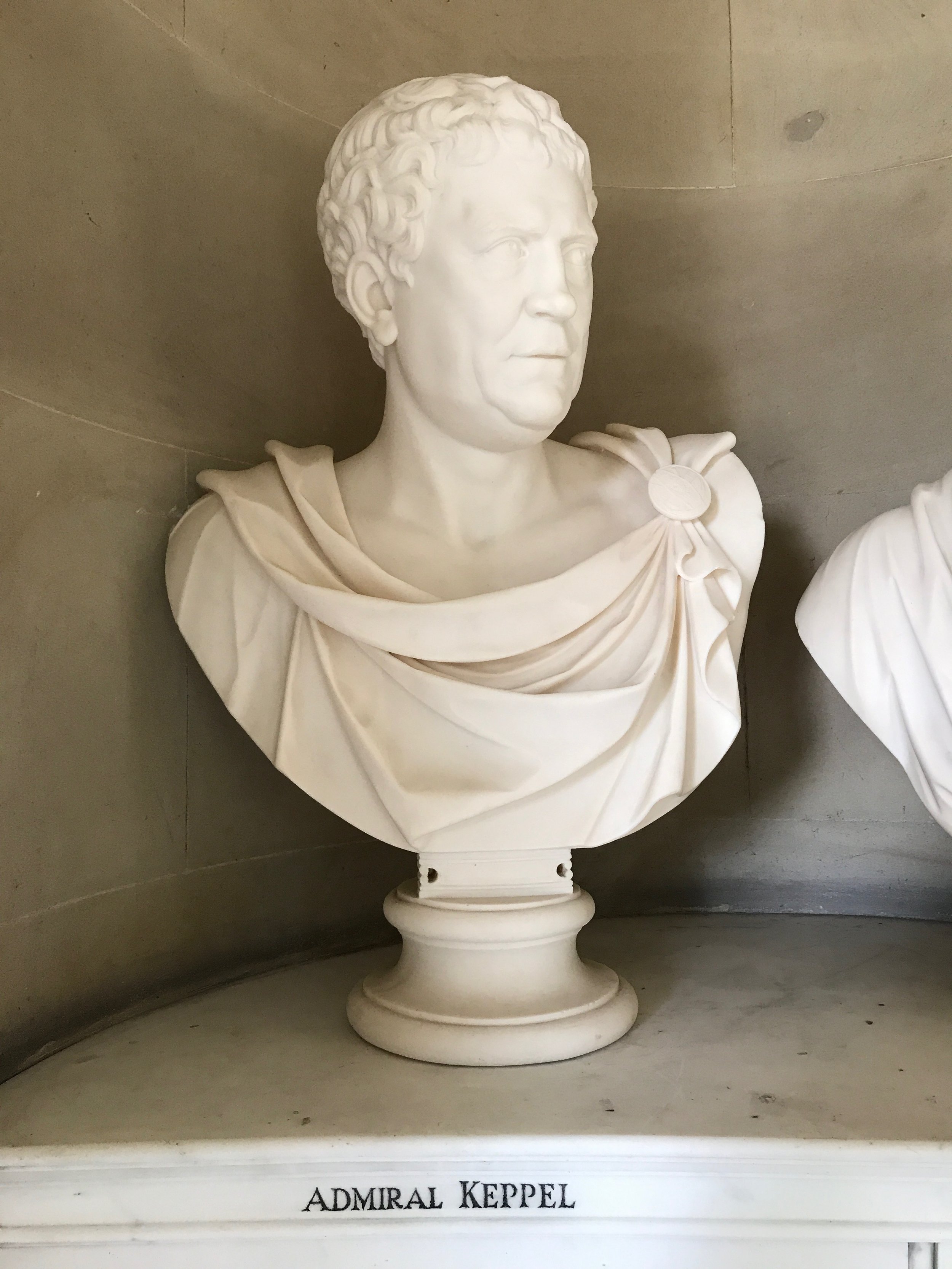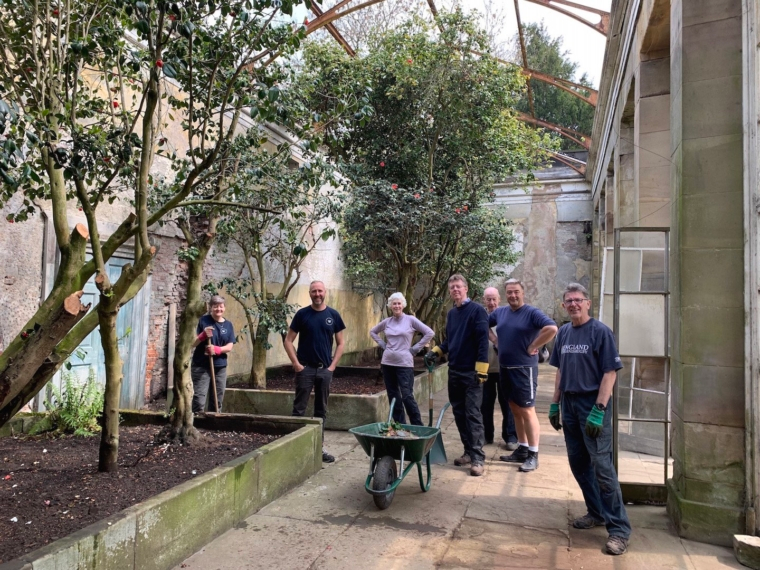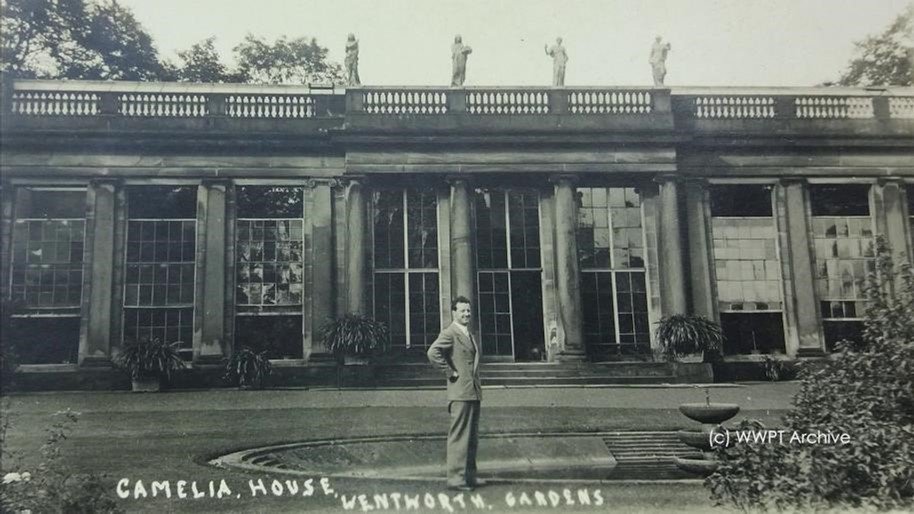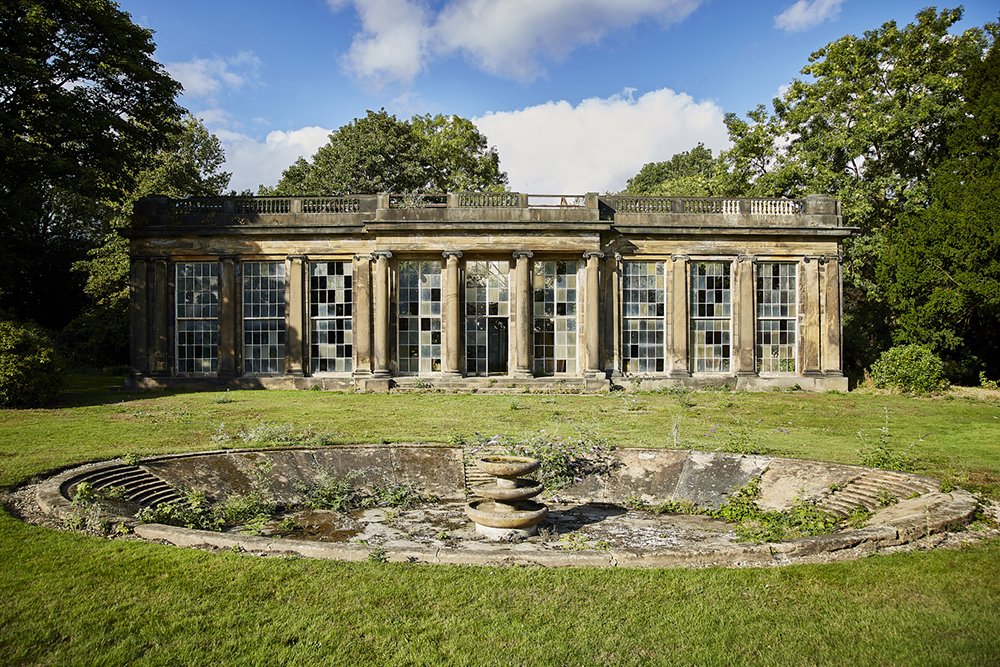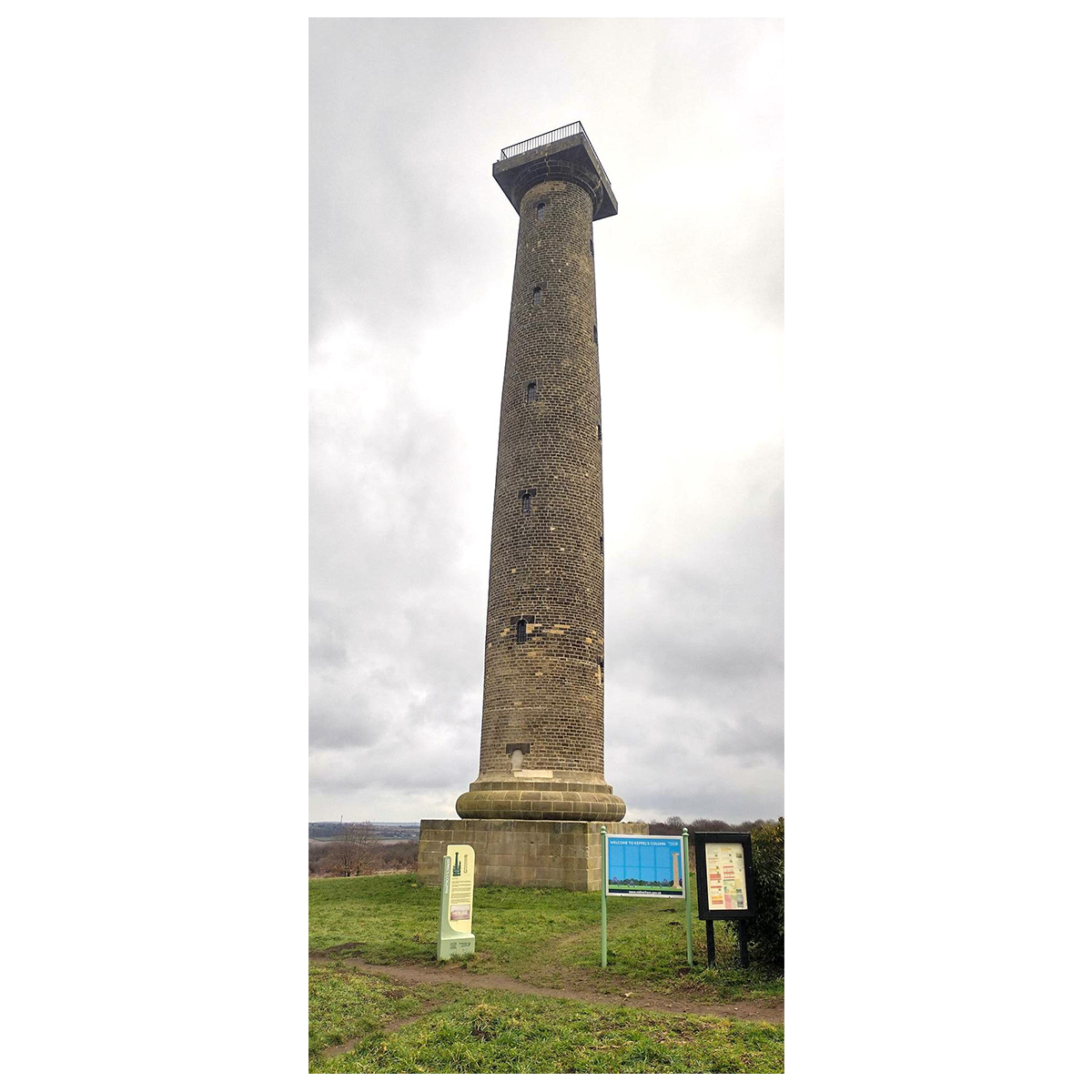Wentworth Woodhouse
The rescue of the great house at Wentworth Woodhouse in Yorkshire is perhaps the most ambitious restoration project undertaken this century. The Historic Houses Foundation has been able to play an important role in the overall project even though it was not a funder of the repair of the main house. In many ways, our involvement with this huge project demonstrates just how the Historic Houses Foundation works best.
Why is Wentworth Woodhouse important?
Wentworth Woodhouse is not just the Palladian house with the longest frontage in Europe, it is also an integrated group of house, garden, park and garden buildings which tells an important cultural and political story about the eighteenth century. Funding was needed not just for the attention-grabbing mansion house, but also for lesser ancillary buildings which were often in very poor condition indeed. Two, in particular, were awarded grants by the Historic Houses Foundation which have meant that their restoration has been able to advance in parallel with the house and provide new opportunities for visitors to the site.
Keppel’s Column
On the southern boundary of the parkland, the owner of Wentworth Woodhouse, Charles Watson-Wentworth, 2nd Marquess of Rockingham built a column 115 foot tall in 1780. The eye-catcher monument was to commemorate the acquittal of his friend, the naval hero, Admiral Augustus Keppel. Admiral Keppel had been court martialled after the inconclusive Battle of Ushant against the French, the first naval engagement between the two countries since the outbreak of the American Revolutionary War. Keppel had been a strong supporter of Rockingham’s Whig party in Parliament and his acquittal was greeted with joy by his Whig friends. The Admiral had a long successful naval career behind him, having gone to sea at the age of 10, and, after his acquittal of blame for failing to achieve victory at the Battle of Ushant, was raised to First Lord of the Admiralty when Rockingham was returned to power as Prime Minister in 1782. The tower, a rare monument to a friendship, was designed by John Carr of York, in the form of a Tuscan column with a viewing platform at the top reached by an internal stair.
Financial headache
The monument is in the care of Rotherham District Council and, since the structure deteriorated and became dangerous in the 1960s, had become something of a financial headache. The HHF were able to provide funds for the complete overhaul of the tower. Now the work is finished, visitors to Keppel’s Column can once again climb the stair to the top to gain a spectacular view over the parkland and the outskirts of the modern town of Rotherham, which reach to its feet.
The Camellia House
The Camellia House is a rather different structure, integral to the historic gardens at Wentworth Woodhouse and belonging to the Wentworth Woodhouse Preservation Trust. Here too the Historic Houses Foundation were able to play an influential part in the fund raising effort to secure the building. The Camellia House is in two parts: the rear of the building was built in 1738 as Lady Rockingham’s Teahouse, a place for Lady Mary Watson-Wentworth, wife of the 1st Marquess of Rockingham to entertain her friends and visit the exotic animals in the adjacent Menagerie set up by her husband. Until the heavy taxation was slashed in 1783, drinking tea was still a privileged aristocratic pastime and a ritual closely associated with female socialising. It was Lady Rockingham’s great nephew, William, 4th Earl Fitzwilliam who updated the building in 1812 by adding a substantial stone and glass building specifically designed to house his collection of camellia plants, newly imported from Asia. The Historic Houses Foundation worked in partnership with other funders including Historic England, National Lottery Heritage Fund, the Garfield Weston Foundation, the Hamish Ogston Foundation, the Ian Addison Charitable Trust and the Swire Charitable Trust not just to restore this charming building but to give it a new useful life that will fit into the visitor attraction and provide a source of income for further restoration. Appropriately, the Camellia House opens next year as an International Tea House for Wentworth Woodhouse. Lady Rockingham’s Teahouse becomes a panelled reception, kitchens and toilets and the fully restored Camellia House will provide room for café style tables. It is a delightful space; against the odds, the camellias planted in the early nineteenth century – some of the earliest ever seen in the UK – have survived and, after a bit of TLC, will be blooming marvellously every spring. Visitors will be able to enjoy tea and cake and a range of tea-related activities.
Heritage at Risk No Longer
Both buildings were on Historic England’s Heritage at Risk list and the Historic Houses Foundation is pleased to have been part of the effort not just to restore an important part of our national heritage, but to give two historic structures a new life so that visitors can enjoy them.


